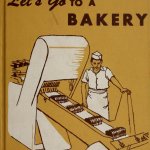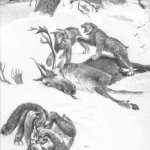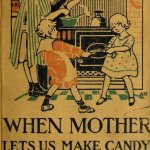Mary Frances Garden Book
Posted in Home Economics, Public Domain on March 11, 2012
A colorful book for children that is chock-full of gardening information! Written in 1916, some of the information may not be up to date. However, unlike other topics, plants have not changed much over the years. Download the Mary Frances Garden Book from archive.org.
Let’s Go to a Bakery
Posted in Health, Home Economics, Kindergarten, Lower Elementary, Preschool, Public Domain, Reading, Technology, Upper Elementary on March 3, 2012

Take a field trip to the bread bakery without leaving the house! This 50+ page book is filled with illustrations. The story explains how bread is made and distributed. Written in the 1950’s, it may not be completely accurate as to the practices used today, but it could start a great discussion about the differences Read More »
Wilderness Ways
Posted in American History, Animals, Literature, Nature Studies, Public Domain, Reading, Scouting And Survival on March 1, 2012

The following sketches. . .are the result of many years of personal observation in the woods and fields. They are studies of animals, pure and simple, not of animals with human motives and imaginations. Eight compelling stories of wilderness creatures by naturalist William J. Long. Each story is written so as to give children an Read More »
When Mother Lets Us Make Candy
Posted in Applied Math, High School, Hobbies and Crafts, Home Economics, Lower Elementary, Middle School, Public Domain, Upper Elementary on February 13, 2012

Some of the best science lessons happen in the kitchen. When learning to make candy, you need to know about temperature, measurement, the crystallization of sugar, and much more. This simple book is full of recipes, instructions, and information about making candy. Fudges, taffies, brittles, caramels, fondants, lozenges, and more mouthwatering recipes will have your children begging Read More »
How We Are Fed
Posted in History, Home Economics, Public Domain, Technology on February 9, 2012
This little geography reader is a dignified piece of writing. Each little story it contains tells about one kind of food, and how it gets to our dining table. From cranberries and chestnuts to cheese and oysters, this book has 28 products that it describes. Some of the methods of production and transport may not Read More »






